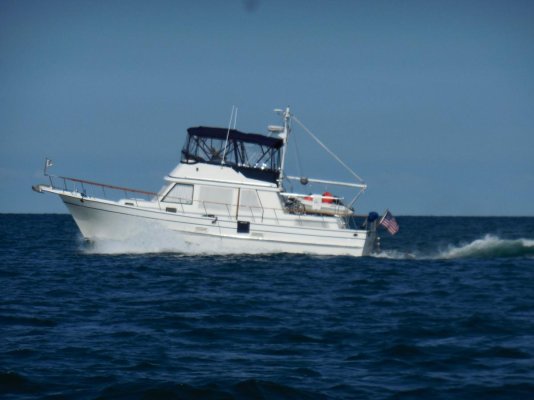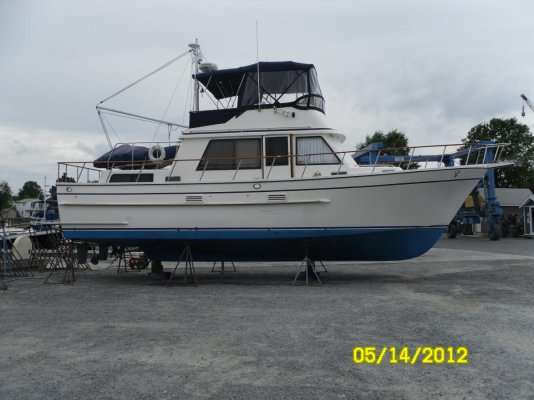fryedaze
Guru
- Joined
- Sep 4, 2011
- Messages
- 1,722
- Location
- USA
- Vessel Name
- Fryedaze
- Vessel Make
- MC 42 (Overseas Co) Monk 42
Ok, I don't understand the physics of how my boat operates. I have a 42' boat with a 38' waterline. I think its 30000 lbs. We have twin 210 HP Cummins with 25X27 props. I can run 8kts at 1400 RPM. The boat rides flat at that speed. Any more than that and the stern starts to squat and the bow come up. I do 9 kts at 1750 rpm but the boat squats at the stern and we through a big wake. It just seems to me that there should be a design that keeps the nose down and doesn't waste all that energy plowing water. Can anyone explain this. Is it bad design or just the physics of a planning hull? Is the shat angle wrong?
The first picture is WOT at 13.3 Knots.
The first picture is WOT at 13.3 Knots.



 That usually makes them slow down and get in line.
That usually makes them slow down and get in line. 